
Crete
Crete is the largest and most populous island in Greece. Its largest city and capital is Heraklion.
Popular dances from Crete
Agaliastos, Anogianos Pidihtos, Apanomeritis, Ethianos Pidihtos, Koutsobadianos, Laziotis, Maleviziotis, Pentozalis, Priniotis, Rethemniotiki Sousta, Rodo, Roumathiani Sousta, Siganos, Syrtos Chaniotikos, Trizalis, and Zervodexos
Costumes from Crete
| This costume is worn throughout Crete but especially in Anogeia from where it got its name. The outfit consists of baggy pants called “foufouloti.” On top goes a long cream-colored dress that extends to show the bottom of the trousers. The “shartsa” of the costume is the classic Cretan apron with rich embroidery. The apron, which is red in color, is tied from behind which allows for both the red and blue sides to be seen. The jacket, called the “ziponi” is made from various colors of felt, usually black, and is richly embroidered in gold. It leaves a large semi-circular opening on the chest in order for the embroidered shirt to be clearly visible. The headscarf is red or burgundy with gold or yellow fringes and is tied in a specific manner, typical of the majority of Cretan costumes. | 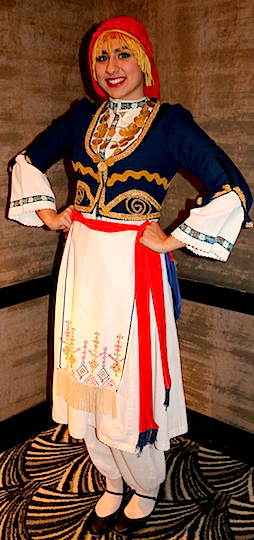 |
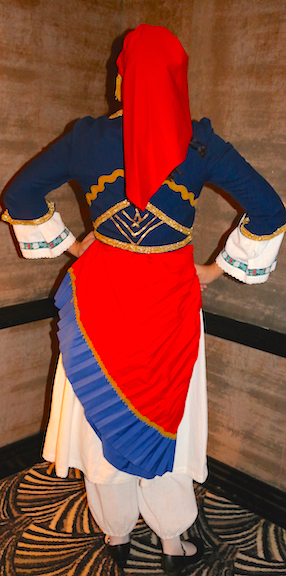 |
||
| This female costume is the festive and bridal costume of the region of Sfakia and was worn throughout Western Crete. It is also the oldest recorded Cretan costume. Its main component is a skirt, which is usually of a Crimson color. The shirt of the costume is woven of white silk or cotton and at the ends of the sleeves there is rich embroidery or lace. Over the shirt is the vest (the “ziponi”). The “ziponi” can be black, brown or burgundy, made from good quality felt or velvet. The “ziponi” is embroidered in gold and has a V-shaped opening. A white apron can also be added to the costumes to showcase more rich embroidery. The jewelry, gold, and embroidery on the chest, neck, and waist symbolize the economic and social status of the Cretan women. Originally the “argyrompounialaki”, the female version of the Cretan knife accompanied the costume. |  |
|||
| This costume originated from Sfakia, Crete and is almost completely made from blue wool. The main component of this costume is the “vraka”, which is a type of baggy pants worn by men. It also consists of a white shirt, a waistcoat (“gileki”) and, occasionally, a jacket (the “mindani”). The eight-meter sash is traditionally complemented by a silver dagger (“the basalis”). This costume is accompanied with white boots, called “stivania”. A black net with fringes, called the “sariki”, is tied on the head. | 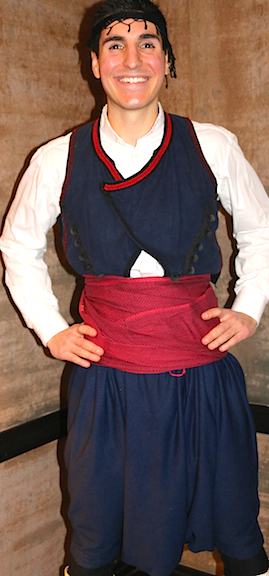 |
 |
||
| The male costume of Hania, Crete consists of "kilotes", or riding pants, that were influenced by the British. This costume is a Cretan staple and is still worn today by many. | 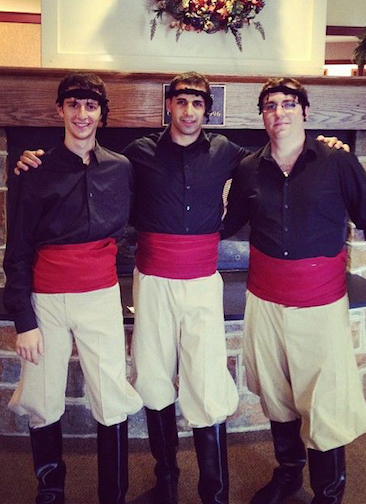 |
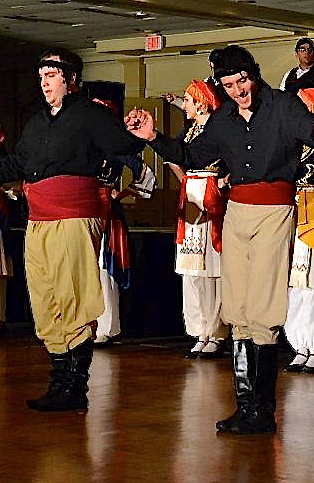 |
||
